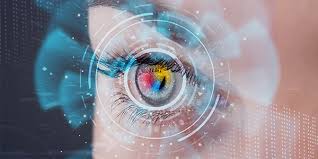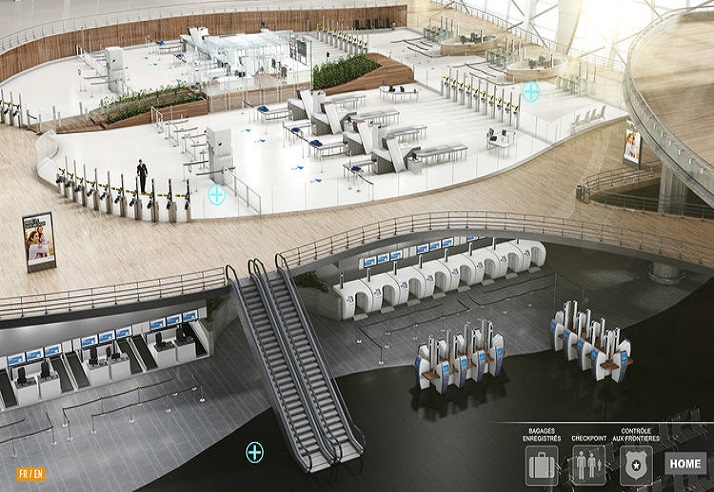
What is biometrics
Biometrics literally means measurement of the living. In its broadest sense, means the quantitative study of living things. Its fields of application are numerous; mention may be made anthropology and medicine. Biometrics also means all the recognition processes, authentication, and identification of a person by some of his physical or behavioral characteristics.
What are the different kinds of biometrics?
They can be grouped into three categories biometrics characteristics:
Biological: DNA BLOOD
Morphological: hand forms, palms, fingerprints, vein patterns, face, iris, vein pattern of the retina, voice headset.
Behavioral: approaches, dynamic signature keystrokes
What's the point?

AUTHENTICATE PERSON:
Authentication helps answer the question: Is this Mr X?
The 1: 1 authentication is to verify that a registered biometric data in the smart card of a passport for example, is the same as that worn by the person holding the passport.

Does it all biometrics are equal?
Each biometrics has its advantages and disadvantages depending on its variability, its collection and its daily use. The voice for example, is a biometrics that may be subject to occasional or more permanent changes. Morpho is specialized in three major biometric technologies are fingerprint recognition, facial recognition, and that of the iris. These biometrics are particularly safe, effective, easy to deploy and use.
RECOGNITION BY THE FINGERPRINT
Every human being has its own fingerprint, with unique characteristics. Even identical twins have different fingerprints. A fingerprint comprises one hundred feature points, also called minutiae. In most cases, it takes a dozen concordant minutiae to prove that two prints are identical. Identity is then ascertained.
FACIAL RECOGNITION
Facial recognition software can identify individuals by the morphology of their face. Their effectiveness depends on several key elements such as the quality of the captured image, the performance of identification algorithms (eg comparing eye spacing points), the reliability of the databases (more than they are complete, the greater the likelihood of identifying the person is strong).
IRIS RECOGNITION
The iris is the colored part of the eye behind the cornea. He trained at the prenatal stage and its appearance varies little during his life. For one person, the right iris is different from the left iris than any other iris belonging to another person. The irises of identical twins are as different as two people taken at random from the population. This technique very reliable identificationest even if the person is wearing glasses or lenses.
Why use biometric authentication?
The exponential number of connected devices (smartphones, tablets ...), goes along with the growing criticality of applications and content that are recorded. The practices have changed, time is no longer fixed but PC mobility. But the uses and safety rules that worked at home, are more difficult to apply in situations of mobility where password use reached its limits. Yet it is essential to protect the contents, transactions and identity.
With biometrics: a gesture of the hand, finger pressure or second attention enough to authenticate! Biometrics makes life easier for users increasingly mobile and connected and offer a simple alternative to passwords and PINs in
DIFFERENT WAYS ACCORDING TO THEIR LEVEL AUTHENTICATION SECURITY
BIOMETRICS EASIER THAN AUTHENTICATION PASSWOR
Biometrics eliminates overly restrictive passwords. Indeed, to be effective, a password must meet four rules: be changed frequently, be complex, not be used for different accounts and do not be noted somewhere. While mobile biometric authentication is easier than to enter a complex password several times a day.
BIOMETRICS AGAINST THEFT OF IDENTITY
Unlike the password, biometrics is the only linking physical and digital identity. In this it helps to guard against identity theft. It can prove that a person accesses an account or device, is who it claims to be. Flying a biometric data without the knowledge of a person and reproduce it for use is not as easy as stealing a password and use it remotely.
BIOETRICS MAKES IT VERY DIFFICULT ONE LARGE SCALE PIRACY
While it is relatively easy to access thousands of accounts in seconds with stolen passwords it much proves more complicated to use biometric databases. In addition to achieving access to biometric data, should also be able to produce a fake for each stolen item and submit it to the appropriate sensor. This prohibits any large-scale attack. Moreover, if the number of PINs is limited between 0000 and 9999, the number of biometric data is infin him

SOCIETAL ISSUES OF BIOMETRICS
BIOMETRICS SOLUTIONS THAT RESPECT THE PRIVACY OF USERS
The solutions developed by Morpho include respect for privacy from the design stage. Data confidentiality is included for storage conditions and access to personal information in the development of solutions to protect citizens and consumers. This approach known as the "Privacy by design" ensures upstream the highest possible level of protection for data used by identity verification and authentication technologies.
BIOMETRICS AND DATA BASE OF ANONYMIZATION
The existence of a biometric database does not imply the existence of a link between biometrics and identity. The identifier connected to the biometrics may be a sequence number or a random number. Biometrics verifies the rights (access, services ...) associated with a person while ensuring anonymity.
BIOMETRICS AND SECURITY OF PRIVATE DATA
biometric identification and authentication does not necessarily mean saving data in a biometric database. Biometric data may be stored in a chip in an identification card or an electronic passport, a smartphone ... During authentication, the chip data are compared with the physical data of the wearer. Technology Match-On-Card to perform this operation on the chip itself and the data never leaves the chip.
BIOMETRICS AND CIVIL IDENTITY
Establish and protect the unique identity of citizens One of the sovereign functions of the state is to guarantee the identity of its citizens. The digital transformation of society and economy requires states to new challenges in the fight against fraud identitéet of provision of online services. The introduction of biometrics responds: it makes the link between physical identity and digital identity to reduce the risk of identity fraud and facilitates the establishment of new service management practices and secure identity. Morpho accompanies States: Census population and creation of civil identity register:


